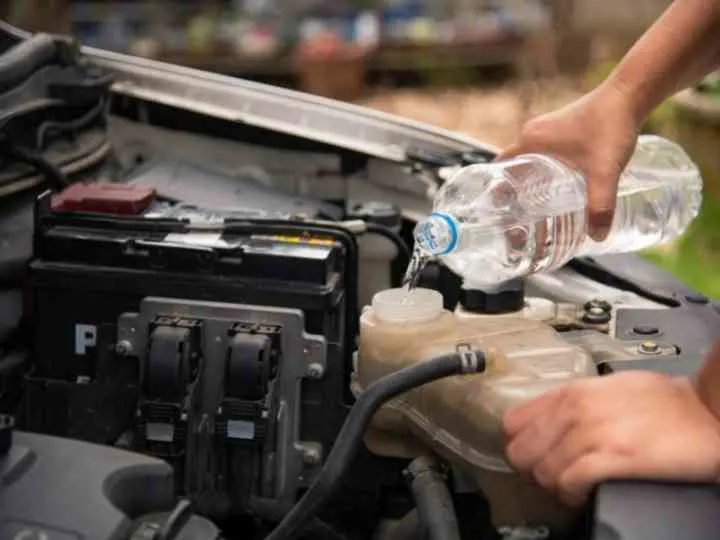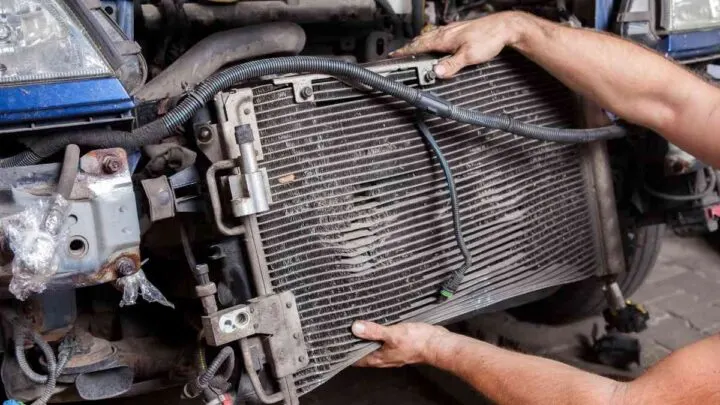An internal combustion engine produces a ton of heat when they’re running. Cooling them down is crucial. Otherwise, they’d overheat and begin to fail.
Your car’s radiator is the primary component of its cooling system.
But “radiator” is a pretty old-fashioned term, no? Surely modern vehicles no longer have clunky, water-cooled radiators, right?
Almost all modern vehicles still use radiators that are usually made of aluminum because of their lightweight functionality. They’ve designed cooling systems to pump refrigerants through radiators after absorbing heat.
Keep reading to learn more about why even modern cars need radiators to function properly!
Do Modern Cars Have Radiators?
You won’t see a ton of air-cooled engines on the road, nowadays. We’ve replaced them with modern cooling systems in most cars. Most of them use radiators as a vital piece of the cooling assembly.
Modern radiators often put a few aluminum fins to the flat tubes connecting it to the car. These increase the radiator’s surface area, increasing cooling efficiency.
Larger surface areas disperse heat into the environment at a faster rate.
The cooling rate of a radiator is proportional to the square of its surface area.
So, you can make them more efficient by enlarging their surface. Heat goes from the radiator’s body into its fins and out into the air.
Many modern designs use a turbulator to increase fluid turbulence. Disrupting its flow as it’s passing through can also enhance its heat transfer rate.
Smoothly flowing liquid only conducts heat when it’s in contact with the radiator.
Most of it won’t conduct anything because it’s stuck in all the tubing. Installing a turbulator changes this, though.
Creating turbulence helps to distribute its heat. It increases how many molecules come into contact with the exterior.
Do Some Cars Not Have Radiators?
There are only a few road vehicles that don’t use radiators as part of their cooling system. Most of them aren’t made anymore, either. However, air-cooled engines are a real thing.
They exchange the traditional radiator for a design that focuses on air circulation. Some air-cooled engines even use fins to increase the rate of heat dissipation, too.
You can find them in a lot of off-road engines. The one that’s in your generator may use an air-cooled design, for example.
Another common place you’ll find them is inside lawn mowers and motorcycles.
Any engine that doesn’t use a liquid refrigerant to transfer heat has an air-cooled design. You won’t find a ton of them on current production road vehicles, though. That doesn’t mean they’ve never been in them, though.
Motorcycles use them to reduce the weight of their engines.
Plus, motorcycles usually have better airflow around their engines. As such, it’s easier to create functional air-cooled engines for motorcycles.
There have been a few cars made by Volkswagen that used this design. The VW G1 had an air-cooled engine, and it was in production until 1986.
You may have seen the Chevrolet Corvair if you’re a fan of stuff they’ve made in the 60s. They produced them from 1960 to 1969 using an air-cooled engine design the whole time.
What Type of Car Has No Radiator?
A number of engines lack radiators. But, you won’t find a ton of modern cars that don’t have them. You’ll still discover a ton of air-cooled engines in the aviation industry, though.
One of the most common cars you’ll find them in are made by Porsche.
The Porsche 356 was one of their most popular models during the 50s. It first hit the market once they released it to the public in 1948. They continued making them using the same design until 1965.
The Porsche 911 is another car that uses an air-cooled engine. Its rear-mounted flat-six engine is able to work without a radiator.
That’s one of the most powerful air-cooled engines to ever go in a car.
Volkswagen used an air-cooled engine to make the VW Beetle, too.
They actually kept using them all the way up to 2013. They’re probably the most common air-cooled car you’ll find on the road today.

What Does a Radiator Do?
Generally speaking, a radiator is a type of heat exchanger.
They’re used to transfer thermal energy created by internal combustion engines. They’re able to transfer it from one medium to another, changing a system’s temperature.
Radiators go into a ton of products to make sure they don’t overheat. You’ll find them on most internal combustion engines.
They’re only useful when they’re connected to the rest of your car’s cooling assembly. This allows refrigerant to flow into the radiator while the engine is running.
That’s what causes the heat to transfer into the radiator.
Your engine creates a ton of heat as a result of combustion. This heat gets absorbed by the refrigerant that’s coursing through the hoses. Heated refrigerant leaves the engine and goes into the radiator.
Once it’s made it there, it disperses the heat. Most radiators have something in them to disrupt the refrigerant’s flow, too. This causes more of its molecules to touch the radiator’s walls as they’re traveling.
The more molecules that touch its walls, the more heat it’s able to disperse.
They’ve also designed them to use fins as a way to increase their surface area. Increasing its surface area enhances the rate at which it transfers thermal energy.
Can You Put Water in Your Radiator?
Driving your car without enough coolant in its radiator isn’t a good idea. Chances are, your engine is going to overheat before you’ve left the neighborhood.
Putting water into your radiator should not be the first thing you do if it’s running low. You should always fill them up using the proper coolant. Most of the time, you can figure out which type your car uses by looking at its manual.
Each coolant has its own color, making them easy to identify.
Make sure you’ve put enough into your radiator before turning on the car.
You can run a radiator if it has water in it. But, you can’t use them for too long. Water doesn’t have the same boiling point as coolant.
So, it evaporates while you’re driving way faster than coolant.
If you have to drive with water in the radiator, make it quick. You should try to go and get some coolant at the nearest auto parts store.
It doesn’t take long to get the right one, and it will prevent your engine from overheating.
Plus, using water to cool the engine also puts it at risk if it drops below freezing. Coolant also functions as antifreeze, most of the time.
So, it can even prevent your engine from cracking if the temperature drops super low.
